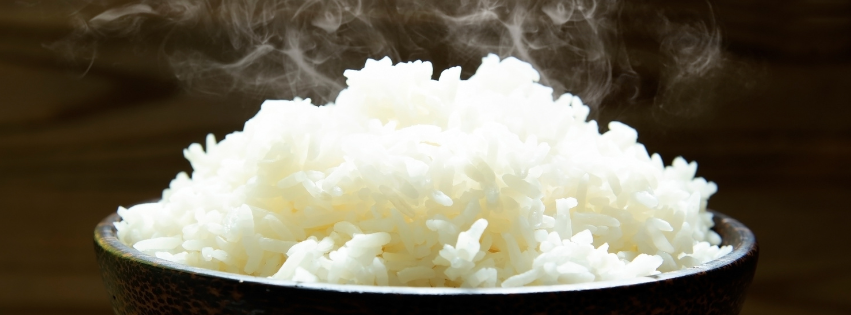
Why Cooled Rice Is Healthier: Boost Gut Health, Digestion, and Blood Sugar Control
BALA BITES: THE RICE TRICK YOU WISH YOU KNEW ABOUT EARLIER
Want to make your rice (and potatoes) healthier without giving them up?
Here's a little mnemonic to help you remember: Cook it. Cool it. Eat it later.
This little-known trick has a real purpose. It's intent is to make the carbs in the rice behave more like fiber instead of fast-digesting starch.
It’s a process called retrogradation, and here’s why it matters.

A CALORIE ISN'T JUST A CALORIE
Cooking and cooling rice changes its structure. Freshly cooked, hot white rice acts like a fast sugar bomb, quickly breaking down into glucose and spiking blood sugar.
But when rice is cooled, the starch reorganizes into resistant starch, which:
- Absorbs fewer calories (fewer available carbs = lower impact on blood sugar)
- Requires less insulin (a big win for metabolic health)
- Keeps you fuller longer (less of a crash-and-crave cycle)
You still get the same food but you will have a totally different metabolic response to it.
BLOOD SUGAR SPIKES ARE A HIDDEN EPIDEMIC
Why does this matter? Because blood sugar problems are everywhere.

- 1 in 3 U.S. adults have prediabetes—80% don’t even know it
- 8 of the top 10 leading causes of death are linked to high blood sugar and its consequences
The US diet is designed to spike blood sugar and most people don’t realize how much everyday foods like rice, potatoes and pasta contribute to this cycle.
One solution? Rethink how you prepare your carbs.
A GUT HEALTH BOOST, TOO
Cooling rice doesn’t just lower the blood sugar impact—it feeds the gut microbiome in a way that hot rice doesn’t. Resistant starch acts like a prebiotic, fueling good gut bacteria.
Resistant starch also increases butyrate production, a short-chain fatty acid linked to lower inflammation, better digestion and improved colon health.
For gut health alone, cooled starches are a powerful upgrade.
WEIGHT LOSS & METABOLIC BENEFITS
Resistant starch doesn’t just help blood sugar and digestion. It may also support weight loss and fat burning.
Studies show that resistant starch can increase fat oxidation (helping the body burn more fat after meals), reduce hunger hormones (keeping cravings in check) and improve insulin sensitivity (making your body process carbs more efficiently).
Interestingly, countries where rice is a staple, like Japan, India, and Thailand, often eat cooled rice in dishes like sushi, fried rice, or rice salads. Their metabolic health outcomes? Better than those in the U.S.
Coincidence? Maybe not.
HOW TO GET THE MOST OUT OF COOLED RICE
Here’s how to prepare your starches for better health.
- Step 1: Cook rice (or potatoes/pasta) as usual.
- Step 2: Let it cool for 12+ hours in the fridge (this maximizes resistant starch).
- Step 3: Eat cold OR reheat gently—reheating doesn’t destroy resistant starch!
- Bonus Tip: Add a little coconut oil or vinegar while cooking—some studies suggest this further lowers the glycemic impact.
THE BOTTOM LINE
- Blood sugar spikes are silent but deadly and contribute to diabetes, heart disease and cognitive decline
- A simple habit, like cooking and cooling your rice, can have a big impact on blood sugar, gut health and metabolism
- Unlike freshly cooked rice, cooled rice offers unique digestion benefits that support a healthier microbiome
- Cooled rice is rich in resistant starch, a powerhouse for gut health and digestion support
- If you're looking to improve blood sugar control naturally, adding cooled rice to your meals is a simple and effective strategy
- You may not have to stop eating rice if you don't want to—you just have to rethink how you prepare it
FURTHER READING
Want more insights like this? Sign up for Bala Bites and get a curated compilation of insights delivered every other week to your inbox
Overwhelmed trying to buy protein powder? Check out our protein powder buyer's guide